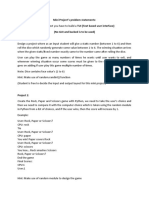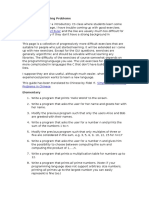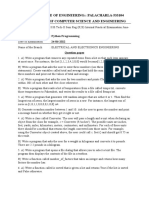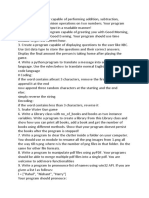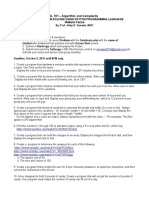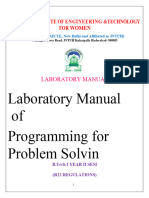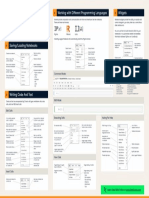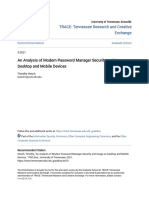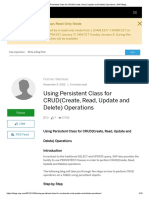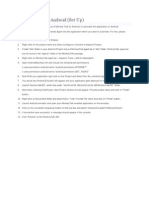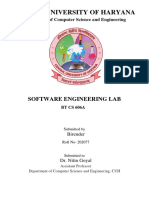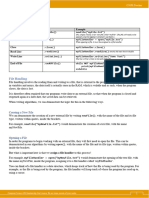0% found this document useful (0 votes)
42 views3 pagesComputing Year 10
This document provides descriptions for 5 mini Python programming projects for students to choose from: 1) A dice rolling simulator, 2) A "Guess the Number" game, 3) A Mad Libs generator, 4) A basic text-based adventure game, and 5) A Hangman game. For each project, the document outlines the overall goal, important concepts to keep in mind, and how the project helps build programming skills in a step-by-step manner from basic to more complex.
Uploaded by
priyam.lateral2k22Copyright
© © All Rights Reserved
We take content rights seriously. If you suspect this is your content, claim it here.
Available Formats
Download as PDF, TXT or read online on Scribd
0% found this document useful (0 votes)
42 views3 pagesComputing Year 10
This document provides descriptions for 5 mini Python programming projects for students to choose from: 1) A dice rolling simulator, 2) A "Guess the Number" game, 3) A Mad Libs generator, 4) A basic text-based adventure game, and 5) A Hangman game. For each project, the document outlines the overall goal, important concepts to keep in mind, and how the project helps build programming skills in a step-by-step manner from basic to more complex.
Uploaded by
priyam.lateral2k22Copyright
© © All Rights Reserved
We take content rights seriously. If you suspect this is your content, claim it here.
Available Formats
Download as PDF, TXT or read online on Scribd
/ 3





